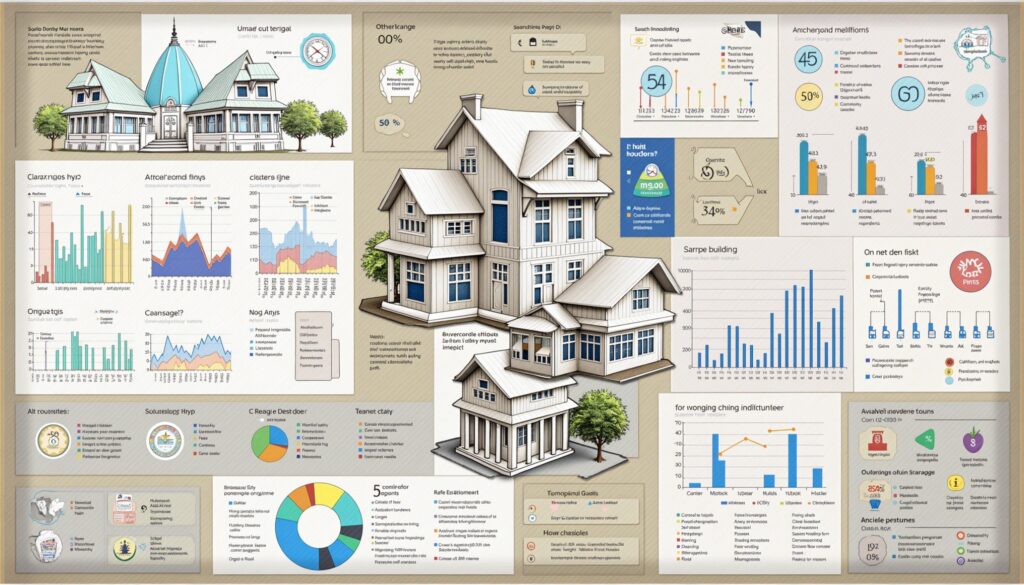Investing in commercial real estate investments can be a lucrative venture for investors seeking to diversify their portfolios and enhance their wealth.
Unlike residential properties, commercial real estate encompasses various types of income-generating properties such as office buildings, retail spaces, industrial units, and multi-family complexes.
As the landscape of real estate evolves, understanding the intricacies of commercial investments is essential for minimizing risks and maximizing returns.
In this comprehensive guide, we will explore the multiple facets of commercial real estate investments, from fundamental definitions and current market trends to financial assessments, acquisition processes, and risk management strategies.
Additionally, we will look into emerging trends and technologies that are transforming the industry, providing valuable insights for both novice and seasoned investors.

Key Takeaways
- Commercial real estate encompasses various property types including retail, office, and industrial spaces.
- Understanding market trends is crucial for identifying profitable investment opportunities in commercial real estate.
- Key financial metrics like cap rate and cash-on-cash return are essential for assessing property value.
- The acquisition process involves several steps, including due diligence and financing, that investors must navigate carefully.
- Future trends and technologies, such as proptech, are poised to transform the commercial real estate landscape.
Understanding Commercial Real Estate: Definitions and Types
Commercial real estate investments encompass a wide range of property types designed for business use, and they play a crucial role in generating revenue through rental income or capital appreciation.
Understanding the various definitions and types within this sector can empower investors to make informed choices.
At its core, commercial real estate includes properties such as office buildings, retail spaces, warehouses, and multifamily housing units.
The distinctions between these types lie in their intended purposes; for instance, office buildings cater to businesses that require workspace, whereas retail properties are geared towards companies that sell goods directly to consumers.
Other categories include industrial properties that are utilized for production and distribution, and mixed-use developments that incorporate multiple functions in a single location.
By learning about these different types of commercial real estate investments, aspiring investors can better align their financial objectives with the right property types, ultimately leading to more strategic investment decisions.
Evaluating Market Trends and Investment Opportunities
When considering a venture into Costa Rica real estate, particularly in the realm of commercial real estate investments, it is crucial to evaluate the latest market trends and investment opportunities that this vibrant country has to offer.
Costa Rica’s economy has been on an upward trajectory, with a consistent influx of foreign investors attracted to its beautiful landscapes, stable political climate, and a growing tourism sector.
Consequently, commercial real estate investments in this region, whether it’s retail spaces, office buildings, or hotel developments, have seen an increase in demand.
Prospective investors should analyze key locations such as San José, which is the bustling capital known for its business hubs, or coastal towns like Tamarindo that are popular among tourists and expatriates.
By assessing current market data, including property appreciation rates and rental yields, investors can make well-informed decisions that align with their financial goals.
Therefore, understanding the dynamic landscape of Costa Rica real estate not only positions investors to capitalize on lucrative opportunities but also to contribute to the country’s thriving economic ecosystem.
‘The most important thing to remember about real estate is that it’s not just about land and buildings; it’s about people. It’s about understanding their needs and creating the value that meets those needs.’ – Unknown

Key Financial Metrics for Assessing Property Value
When assessing property value in the realm of commercial real estate investments, understanding key financial metrics is crucial for making informed decisions.
One of the primary metrics used is the capitalization rate (cap rate), which provides insight into the potential return on investment by comparing the property’s net operating income to its purchase price.
A lower cap rate may indicate a higher property value due to perceived stability, while a higher cap rate can suggest potential risks and lower property values.
Additionally, cash-on-cash return is another critical metric, measuring the annual pre-tax cash flow relative to the total cash invested in the property.
This helps investors gauge how well their capital is working.
Furthermore, understanding the internal rate of return (IRR) allows investors to project the potential growth and overall profitability of their investments over time.
By carefully analyzing these financial metrics, investors can navigate the commercial real estate investments landscape with confidence and make choices that align with their financial goals.
Navigating the Acquisition Process: Steps and Considerations
When it comes to navigating the acquisition process for commercial real estate investments in Costa Rica, there are several crucial steps and considerations to keep in mind.
First and foremost, conducting thorough market research is essential to identify lucrative opportunities that align with your investment goals.
Understanding local market trends, property values, and the economic environment will inform your decisions.
Next, it’s vital to secure the services of a reputable local real estate agent or consultant who specializes in commercial properties.
They can assist in locating suitable properties, negotiating terms, and providing insights into the legal requirements for purchasing real estate in Costa Rica.
Additionally, potential investors should familiarize themselves with the Costa Rican legal framework, especially regarding property ownership policies, which can differ significantly from those in other countries.
Financing options must also be explored, whether through local banks or international lenders, as understanding your budget will shape your investment strategy.
Lastly, performing due diligence on any property you’re interested in—such as title verification, property condition assessments, and land use regulations—will safeguard your investment, ensuring that your venture into commercial real estate investments in Costa Rica is both profitable and secure.

Risk Management Strategies in Commercial Real Estate
In the dynamic landscape of commercial real estate investments, effective risk management strategies are essential for safeguarding assets and maximizing returns.
Investors must begin by conducting thorough due diligence, which includes analyzing market trends, assessing property locations, and understanding tenant profiles.
Diversification plays a critical role in this process; by spreading investments across different types of properties—such as retail, office, and industrial spaces—investors can mitigate the impact of market fluctuations in any single sector.
Additionally, diligent financial planning and forecasting, alongside maintaining adequate reserves for unexpected expenses, can help cushion the impact of economic downturns.
Furthermore, engaging with experienced professionals, including real estate brokers, property managers, and financial advisors, can provide valuable insights that enhance decision-making and solidify risk management frameworks.
By implementing these strategies, investors can not only protect their commercial real estate investments but also position themselves for long-term success in a competitive market.
Future Trends and Technologies Shaping the Industry
As the commercial real estate investments landscape evolves, several future trends and technologies are emerging, driving changes and creating new opportunities for investors.
The rise of smart buildings, equipped with Internet of Things (IoT) devices, is revolutionizing how properties are managed, enhancing operational efficiency, and reducing costs.
Furthermore, the incorporation of big data analytics allows investors to make informed decisions by providing insights into market trends and consumer behaviors.
Green building practices are also gaining traction, catering to the growing demand for sustainable and eco-friendly properties, which can lead to lower operating costs and increased asset value over time.
Additionally, remote work and e-commerce are reshaping demand for retail and office space, urging investors to adapt their strategies.
By staying abreast of these trends and technologies, those engaged in commercial real estate investments can position themselves favorably in an ever-changing market.
Frequently Asked Questions
What is commercial real estate?
Commercial real estate refers to properties specifically used for business purposes, including office buildings, retail spaces, industrial properties, and multi-family apartment buildings.
Unlike residential real estate, which is primarily for personal use, commercial properties are an investment opportunity generating income through leasing.
What are the key financial metrics to assess commercial real estate investments?
Important financial metrics for evaluating commercial real estate investments include Net Operating Income (NOI), Capitalization Rate (Cap Rate), Cash-on-Cash Return, and Internal Rate of Return (IRR).
These metrics help investors gauge property performance and compare investment opportunities.
What steps should I take to navigate the acquisition process of commercial real estate?
The acquisition process typically involves several steps: conducting thorough market research, identifying potential properties, performing due diligence (including financial assessment and inspections), negotiating purchase agreements, securing financing, and finalizing the transaction with closing.
What are some common risks associated with commercial real estate investments?
Risks include market fluctuations, tenant turnover, operational expenses exceeding projections, financing issues, and changes in local regulations.
Employing effective risk management strategies can help mitigate these risks, such as diversifying your portfolio and conducting comprehensive market analysis.
How is technology shaping the future of commercial real estate investments?
Technology is transforming commercial real estate through advancements like property management software, data analytics for market trends, virtual and augmented reality for property viewing, and blockchain for secure transaction processing.
These innovations enhance operational efficiency and improve investment decision-making.





